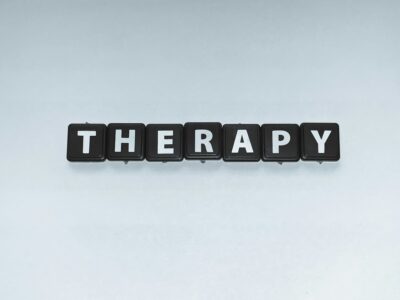In our fast-paced world filled with constant stressors and overwhelming demands, finding moments of peace can feel like an impossible task. Daily CBT reflections for calm offer a scientifically-backed approach to managing anxiety, reducing stress, and cultivating inner tranquility. Cognitive Behavioral Therapy (CBT) techniques, when practiced consistently through daily reflection, can transform how we perceive and respond to life’s challenges. By incorporating these powerful mental health tools into your routine, you can develop a more balanced perspective, improve emotional regulation, and create lasting positive changes in your overall well-being.
The beauty of daily CBT reflections lies in their accessibility and effectiveness. Unlike lengthy therapy sessions or complex meditation practices, these reflections can be completed in just a few minutes each day, making them perfect for busy individuals seeking practical solutions for stress management. Research consistently shows that regular CBT practice helps rewire negative thought patterns, reduce rumination, and build resilience against future stressors.
Understanding the Foundation of CBT Reflections
Cognitive Behavioral Therapy operates on the fundamental principle that our thoughts, feelings, and behaviors are interconnected. When we experience distressing emotions or heightened stress, it’s often because our thoughts have become distorted or unhelpful. Daily CBT reflections for calm work by helping us identify these problematic thought patterns and replace them with more balanced, realistic perspectives.
The core components of effective CBT reflections include thought identification, emotional awareness, and behavioral observation. During your daily practice, you’ll learn to recognize automatic negative thoughts, understand how these thoughts influence your emotional state, and discover how your emotions subsequently affect your actions and decisions. This awareness creates a powerful foundation for positive change.
CBT reflections differ from general journaling or meditation because they follow structured techniques designed to challenge and reframe unhelpful thinking patterns. Rather than simply documenting your day or clearing your mind, you’ll engage in specific exercises that target cognitive distortions such as catastrophizing, all-or-nothing thinking, and mental filtering. This targeted approach makes CBT reflections particularly effective for achieving lasting calm and emotional stability.
Essential Techniques for Daily CBT Practice
Implementing daily CBT reflections for calm requires understanding and mastering several key techniques that form the backbone of cognitive behavioral therapy. These evidence-based methods can be easily adapted for personal use and integrated into your existing daily routine without requiring extensive training or professional guidance.
Thought Record Technique
The thought record is perhaps the most fundamental CBT tool for daily reflection. This technique involves documenting triggering situations, identifying the automatic thoughts that arise, recognizing the emotions these thoughts create, and developing more balanced alternative thoughts. Start by setting aside 5-10 minutes each evening to review your day and identify one situation that caused stress or negative emotions.
Write down the specific situation, the thoughts that immediately came to mind, and the emotions you experienced. Rate the intensity of these emotions on a scale of 1-10. Next, challenge your automatic thoughts by asking yourself questions like “Is this thought realistic?” or “What evidence do I have for and against this thought?” Finally, develop a more balanced perspective and notice how this new thought affects your emotional intensity.
Cognitive Restructuring for Inner Peace
Cognitive restructuring focuses on identifying and modifying distorted thinking patterns that contribute to stress and anxiety. During your daily reflections, pay attention to common cognitive distortions such as jumping to conclusions, personalizing situations that aren’t about you, or assuming the worst-case scenario will occur. When you notice these patterns, practice reframing them using more objective, evidence-based thinking.
Core Daily CBT Reflection Practices
Establishing a consistent routine of daily CBT reflections for calm begins with understanding the fundamental techniques that form the backbone of cognitive behavioral therapy. These evidence-based practices help identify and challenge negative thought patterns that contribute to stress and anxiety.
The Three-Column Thought Record
One of the most effective daily CBT reflections for calm involves using a three-column thought record. In the first column, write down the triggering situation or event. The second column captures your automatic thoughts and emotions, while the third column allows you to examine evidence for and against these thoughts. For example, if you’re feeling overwhelmed by work deadlines, you might initially think “I’ll never finish everything on time.” Through reflection, you can challenge this with evidence like past successes or break down tasks into manageable steps.
This structured approach transforms overwhelming emotions into actionable insights. By consistently practicing this technique, you develop the ability to pause between stimulus and response, creating space for more balanced thinking.
Cognitive Distortion Identification
Daily reflection sessions should include identifying common cognitive distortions such as all-or-nothing thinking, catastrophizing, or mind reading. When you notice thoughts like “Everyone thinks I’m incompetent” after a minor mistake, you can label this as mind reading and ask yourself for concrete evidence. This practice gradually weakens the power these distorted thoughts have over your emotional well-being.
Regular identification of these patterns helps build awareness of your unique thinking tendencies. Over time, this awareness becomes automatic, allowing you to catch unhelpful thoughts before they spiral into anxiety or stress.
Behavioral Activation Through Reflection
Your daily CBT reflections for calm should also examine the relationship between activities and mood. Track which activities energize you versus those that drain your mental resources. This might reveal that morning walks significantly improve your mood, while endless social media scrolling increases anxiety levels.
Use these insights to intentionally schedule mood-boosting activities throughout your day. Even small changes, like taking five-minute breathing breaks between meetings, can compound into significant improvements in overall well-being.
Digital Tools and Resources
Modern technology offers valuable support for maintaining consistent reflection practices. Digital platforms can provide guided prompts, track patterns over time, and offer personalized insights based on your entries. If you’re looking to explore structured CBT techniques with professional guidance, you might want to Try Aitherapy now to access comprehensive tools and resources designed to support your mental health journey.
Creating Sustainable Reflection Habits
The key to successful daily CBT reflections for calm lies in consistency rather than perfection. Start with just five minutes each evening, reviewing one significant interaction or challenging moment from your day. Focus on identifying the thoughts, emotions, and behaviors involved, then gently challenge any unhelpful patterns you notice.
Consider linking your reflection practice to existing habits, such as having your morning coffee or preparing for bed. This natural integration makes the practice feel less like another task and more like a valuable part of your daily routine. Remember that building new neural pathways takes time, so be patient with yourself as you develop this transformative habit.
Building Long-term Success with CBT Reflections
The journey toward lasting calm through daily CBT reflections requires patience and commitment, but the rewards are substantial. As you continue practicing these techniques, you’ll notice your ability to manage stress and anxiety improves naturally. The key is maintaining consistency while allowing room for growth and adaptation in your approach.
Tracking Your Progress
Document your emotional patterns and responses over weeks and months to identify meaningful trends. You might discover that certain situations consistently trigger specific thought patterns, or that particular CBT techniques work better for different types of stressors. This long-term perspective helps refine your daily CBT reflections for calm, making them more targeted and effective.
Keep a simple rating system for your overall mood and stress levels before and after reflection sessions. This tangible evidence of improvement can motivate you during challenging periods when progress feels slow.
Expanding Your Practice
Once you’ve established a solid foundation with basic reflection techniques, consider incorporating additional CBT strategies such as behavioral experiments or values-based goal setting. These advanced practices can deepen your understanding of the connections between thoughts, feelings, and behaviors while providing new tools for managing complex emotional situations.
Remember that daily CBT reflections for calm are most effective when combined with other self-care practices. Regular exercise, adequate sleep, and meaningful social connections all support the cognitive changes you’re working to develop through reflection.
Final Thoughts
Implementing daily CBT reflections for calm into your routine represents a powerful investment in your mental health and overall well-being. These evidence-based practices offer concrete tools for managing stress, reducing anxiety, and building emotional resilience. The structured approach of CBT reflection helps transform overwhelming emotions into manageable insights, creating lasting positive changes in how you respond to life’s challenges.
Your commitment to this practice will yield benefits that extend far beyond individual reflection sessions. As these skills become second nature, you’ll find yourself naturally approaching difficult situations with greater clarity and confidence. If you’re ready to explore structured CBT techniques with additional guidance and resources, you can Try Aitherapy now to access comprehensive tools designed to support your mental health journey.
Start small, stay consistent, and trust in the process. Your future self will thank you for the calm and clarity that daily CBT reflections bring to your life.
References
Beck, J. S. (2011). Cognitive behavior therapy: Basics and beyond (2nd ed.). Guilford Press.
Hofmann, S. G., Asnaani, A., Vonk, I. J., Sawyer, A. T., & Fang, A. (2012). The efficacy of cognitive behavioral therapy: A review of meta-analyses. Cognitive Therapy and Research, 36(5), 427-440.
Wright, J. H., Brown, G. K., Thase, M. E., & Basco, M. R. (2017). Learning cognitive-behavior therapy: An illustrated guide (2nd ed.). American Psychiatric Publishing.
![$input.first().json.photos[2].photographer_url](https://images.unsplash.com/photo-1731624637604-eba223ee268d?crop=entropy&cs=tinysrgb&fit=max&fm=jpg&ixid=M3w4MDk5MjJ8MHwxfHNlYXJjaHwzfHxjYWxtJTIwd29ya3NwYWNlJTJDJTIwbW9ybmluZyUyMHJvdXRpbmUlMkMlMjBqb3VybmFsfGVufDB8fHx8MTc2MDE3Njg1M3ww&ixlib=rb-4.1.0&q=80&w=1080)


